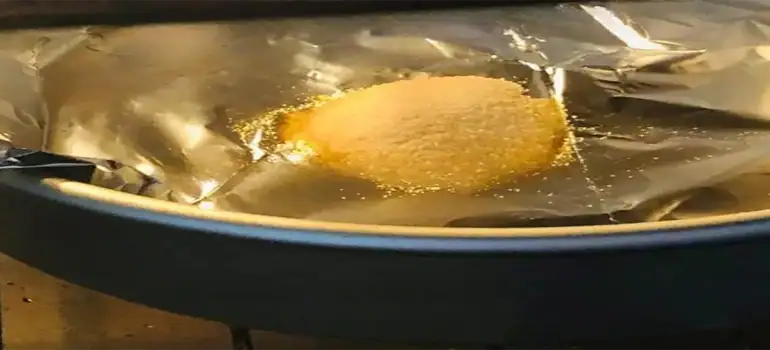
Desi molasses
Desi molasses, a waste product from the processing of sugarcane, is a versatile component that has been used for generations in both industrial and culinary uses. Through a complex procedure that involves removing the sugarcane’s natural sugars, this thick and viscous liquid is made. In this post, we will look at the method of manufacture for desi molasses and its use in several fields. A careful technique is used to extract desi molasses, a thick and sweet syrup, from sugarcane.
Juice from sugarcane, which contains both natural sugars and impurities, is removed when it is harvested. To concentrate the sugars, the juice goes through clarifying and boiling. Molasses and sugar crystals separate as a result of crystallization. Different grades of molasses with unique flavours are produced by additional boiling’s. Desi molasses is used in cooking, in food as a sweetener, and in the brewing of alcoholic drinks. Its value is increased by its nutritional advantages, particularly the presence of iron. This article explores the fascinating process of making desi molasses and explores some of its numerous applications.
Sugarcane Harvesting and Cultivation:
Sugarcane cultivation is the initial step in the production of desi molasses. A tropical and subtropical plant, sugarcane thrives in warm settings with access to enough water. For it to develop, the soil must be well-drained and get enough sunlight. The sugarcane plants can be picked when they reach maturity.
- Advertisement -
Processing of Sugarcane
Several procedures are involved in the production of desi molasses, beginning with the juice extraction process. The stalks of sugarcane are washed and stripped of their leaves after harvest. MolasseAfter that, the juice in the fibrous stalks is extracted by crushing them. The distinctive flavours of desi molasses is enhanced by the presence of natural sugars, minerals, and other ingredients in this juice.
Sugarcane processing
Sugarcane juice that has been extracted is frequently murky and contains contaminants; this juice must be clarified and heated. Juice is clarified in order to guarantee the quality of the finished product. In order to coagulate the juice and remove contaminants, which produces a clear liquid, heating is required. The clarified juice is then put into big boilers, where it progressively gets heated up and gets concentrated using a
Separation and crystallization:
The sugars start to crystallize during the boiling process once the sugar concentration reaches a particular point. The combination is now given time to cool and settle, which separates the crystals from the liquid. Crystallized sugar and molasses are both products of this separation process. This stage’s molasses is known as “first molasses” and is described as having a mild flavor and colours.
Second and third Boiling’s:
The amount that remains liquid is put through repeated boiling’s in order to get the most sugar out of the juice. The results of these further boiling’s are “second molasses” and “third molasses.” As a result of its greater impurity content, second molasses is darker in colours and more flavorful than first molasses. Third Because it undergoes additional evaporation and concentration, third molasses is even darker and has a stronger flavor.
Uses for Desi Molasses
Desi molasses is used in many different industrial and culinary applications because of its distinctive flavor profile and nutrient content. Feedipedia – MolassesTraditional meals include baked items and savoury sauces that employ it as a sweetener. A favorite ingredient in marinades, glazes, and condiments because of the richness its rich flavor brings to foods. In addition, desi molasses plays a crucial role in the creation of alcoholic beverages like rum, where it adds flavor and colours.
Benefits in terms of nutrition:
D desi molasses is a good source of vitamins and minerals like calcium, potassium, and iron. It is a sweetener, however it both potassium and calcium. While it is a sweetener, it also has some nutritional advantages over processed sugars. Its notable iron content makes it a beneficial dietary supplement, especially for people with iron-deficiency anaemia.
Industrial Applications
Desi molasses is used in a number of industrial fields in addition to its culinary functions. It is used as a raw ingredient in the creation of industrial alcohol, which is used in the production of solvents, fuels, and chemicals. Due to its nutritional value and capacity to improve the flavor of animal feed, molasses is also used in the preparation of livestock feed. famous-food-of-Baluchistan

FAQs
Where does the desi molasses come from?
Desi molasses is made from sugarcane juice using an extraction, clarifying, and boiling procedure.
Why does molasses have a unique flavor?
Sugarcane juice contains concentrated sugars, minerals, and contaminants that give molasses its flavor.
What causes molasses to form crystals?
Crystal separation results from the boiling of the juice’s sugars, which crystallize as the liquid evaporates.
What molasses varieties are there?
First, second, and third molasses are produced through various boiling’s and have different flavors and hues.
What use does desi molasses serve?
In addition to being used as a sweetener and flavor enhancer, Molassesit also helps make alcohol and other industrial products.
Conclusion:
Desi molasses is a wonderful invention that is intricately intertwined into the process of refining sugarcane. Its creative process is demonstrated by its beginnings as sugarcane juice and its transformation through boiling and clarifying. Desi molasses demonstrates its adaptability with a variety of industrial uses, including the production of alcohol and animal feed as well as its function in culinary endeavors where it enhances flavours. The deep, distinctive flavours and nutritious benefits only add to its allure.
Desi molasses, a product of creativity and tradition, continues to fascinate our senses and be a crucial component in a variety of applications. It takes several steps to make desi molasses from sugarcane, including precise juice extraction, clarity, boiling, and separation. A variety of molasses variants with a wide range of flavours and applications are produced using this ancient method. Desi molasses has established itself as a useful component, providing distinctive flavours and nutritional advantages across a wide range of disciplines, from culinary uses to industrial utilization. Desi molasses still plays a big part in many facets of our life, whether it’s used as a sweetener in customary foods or produced into commercial goods.







